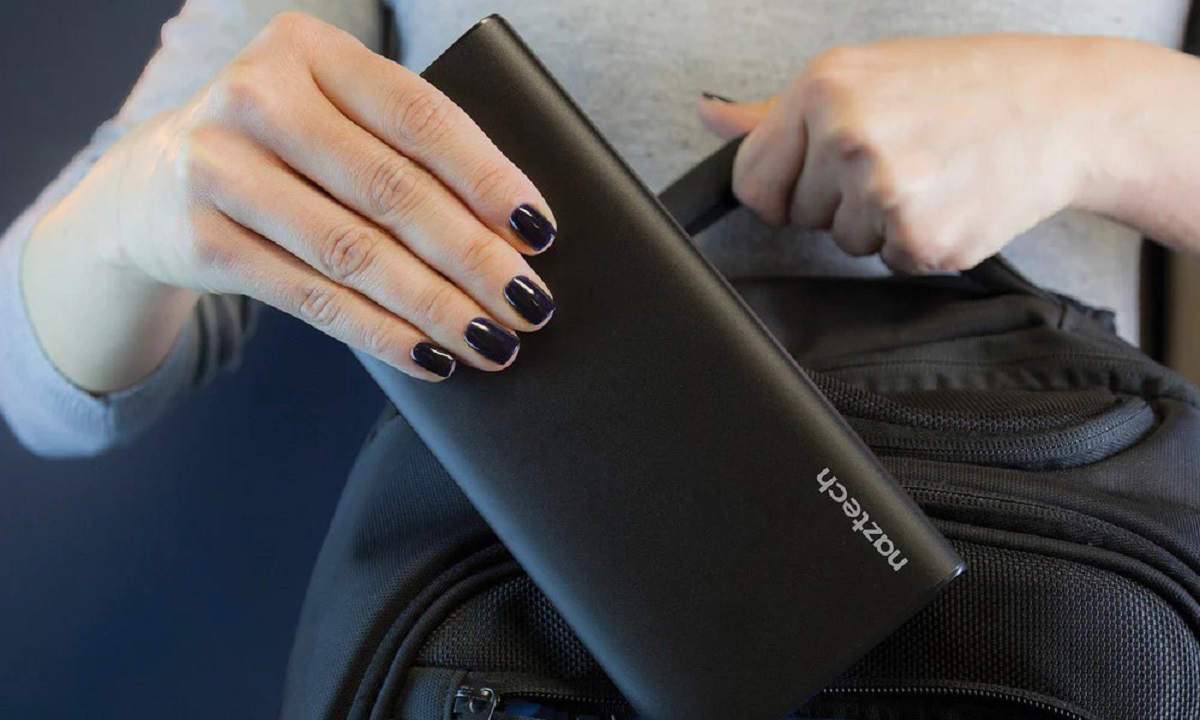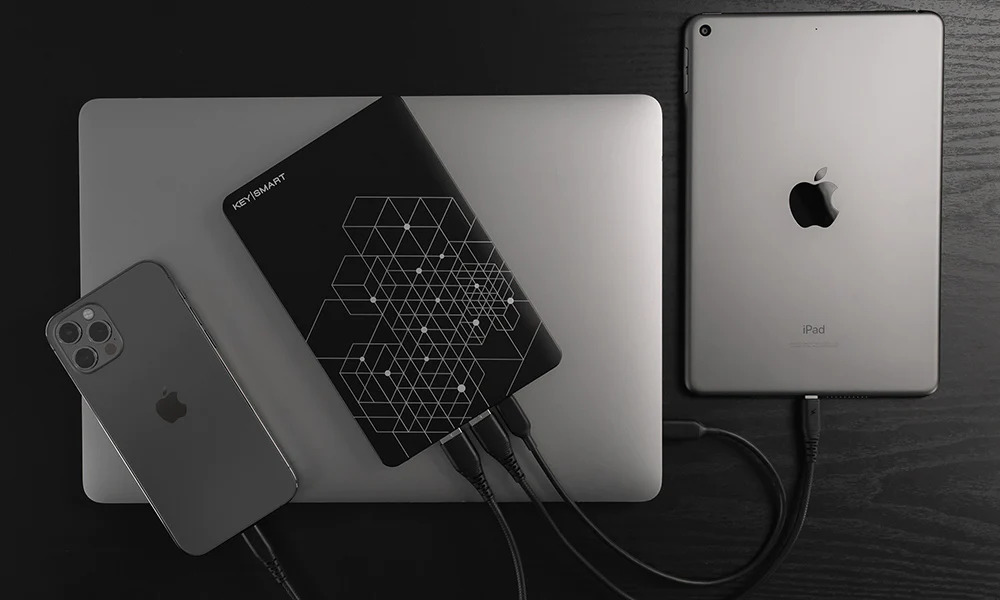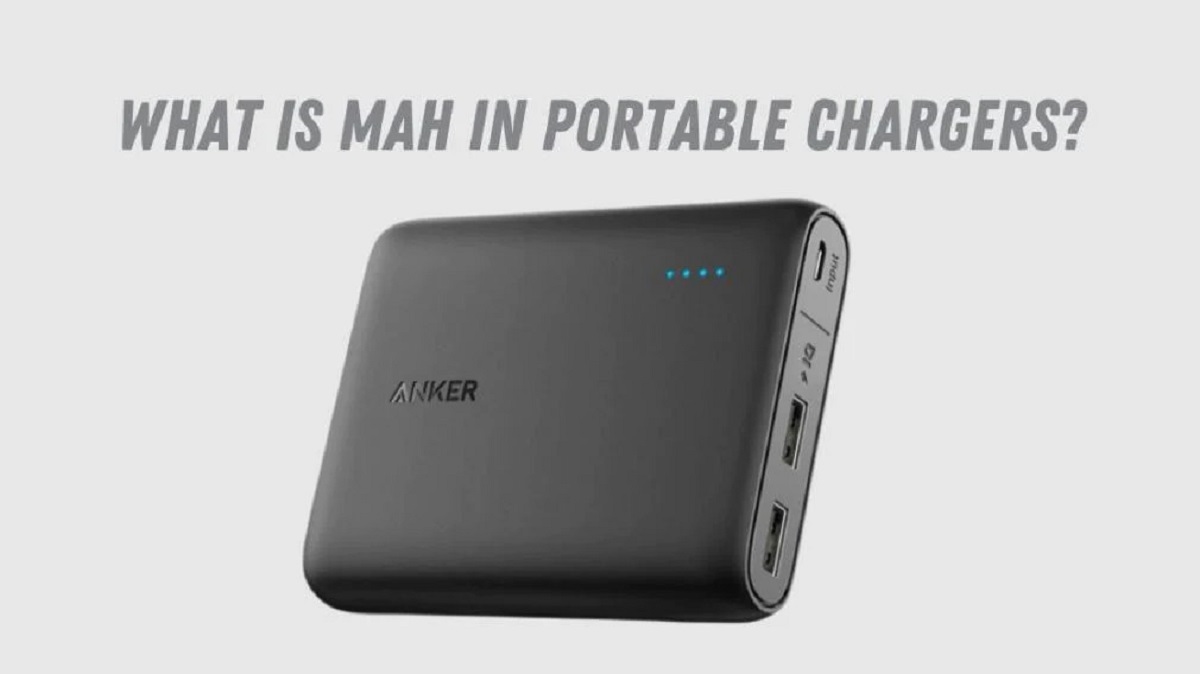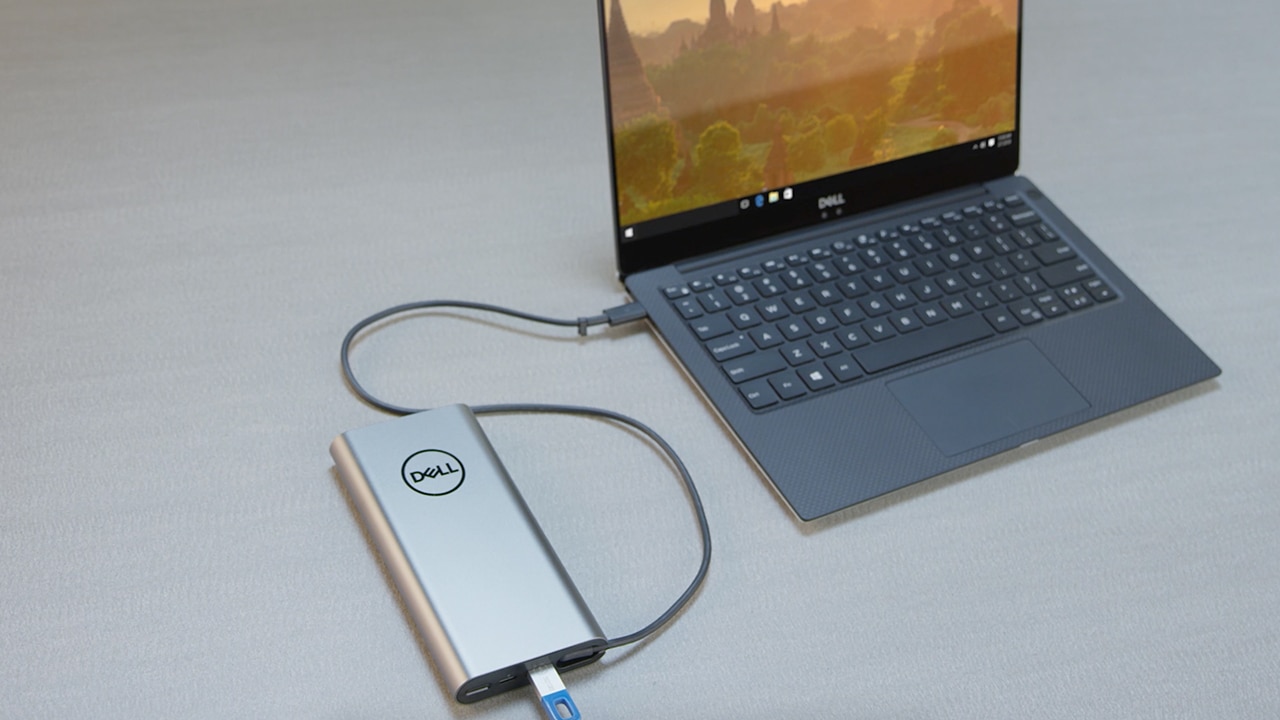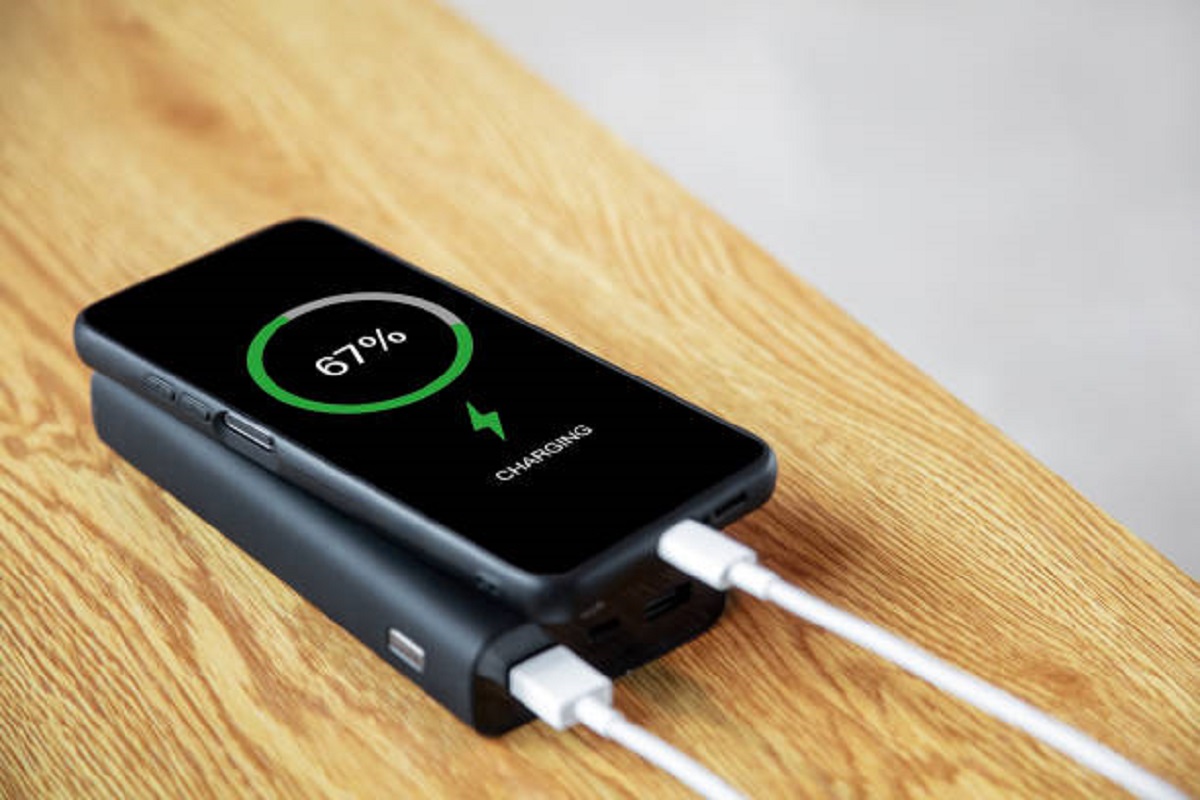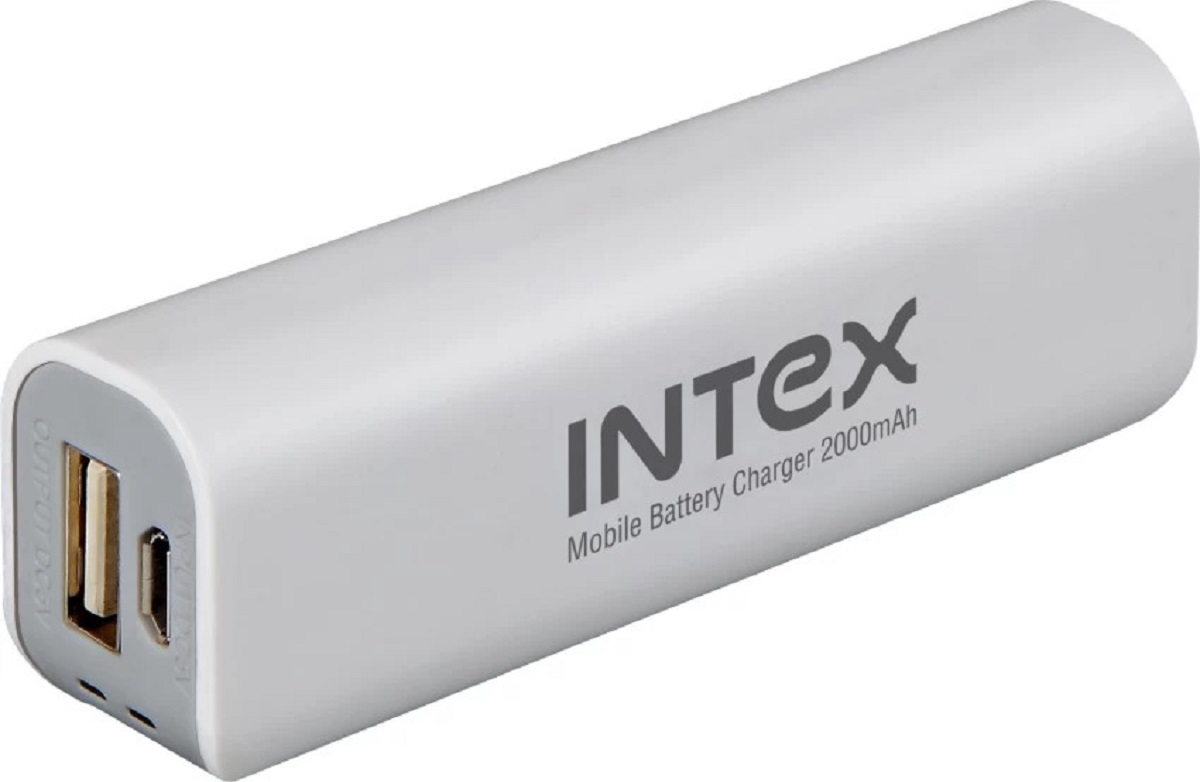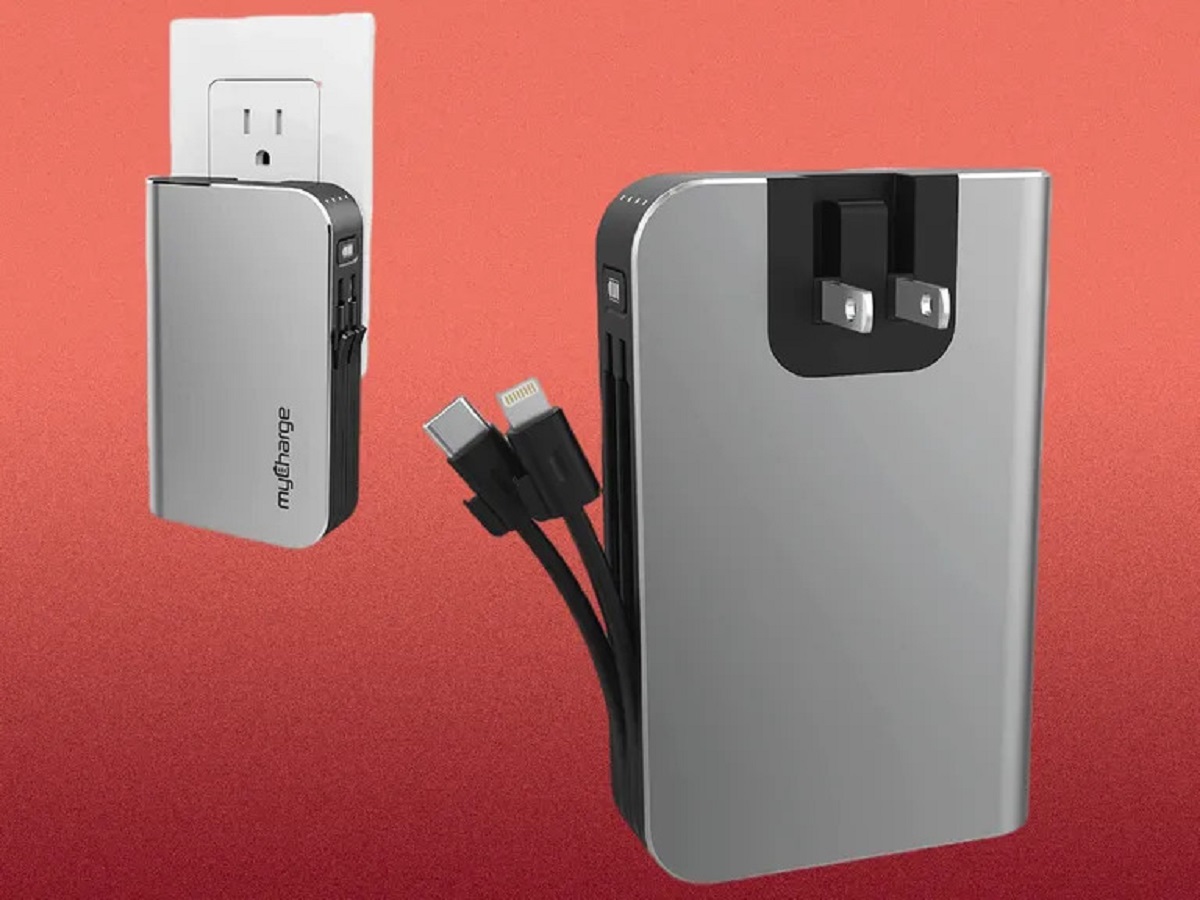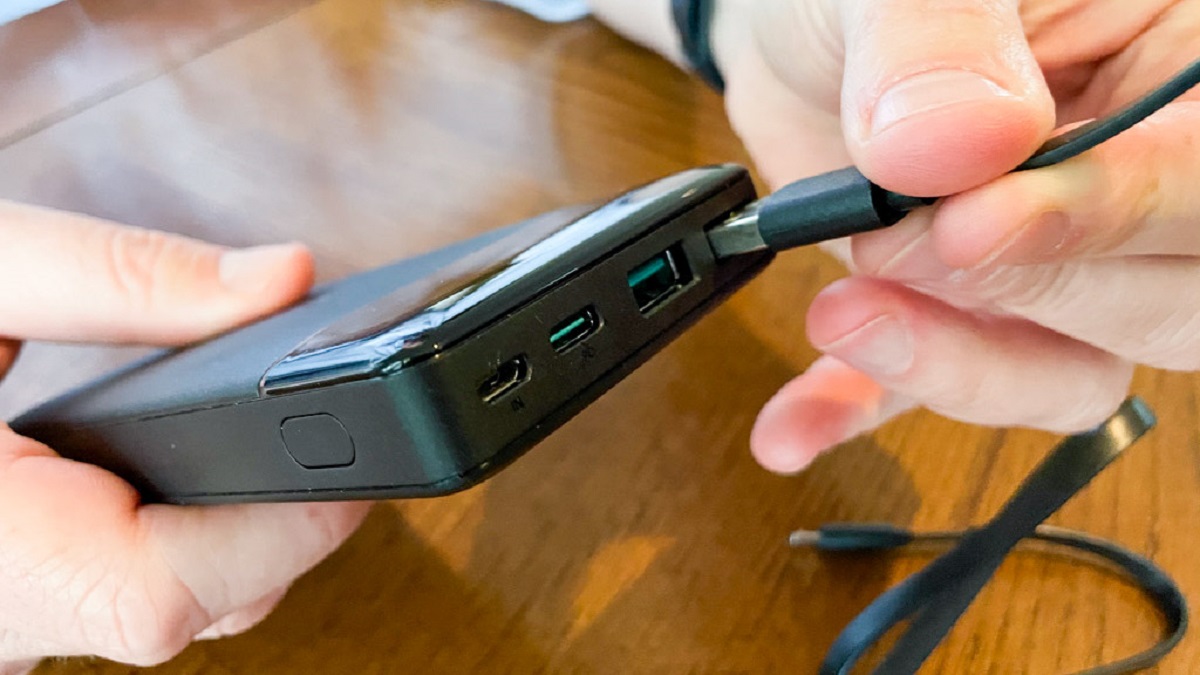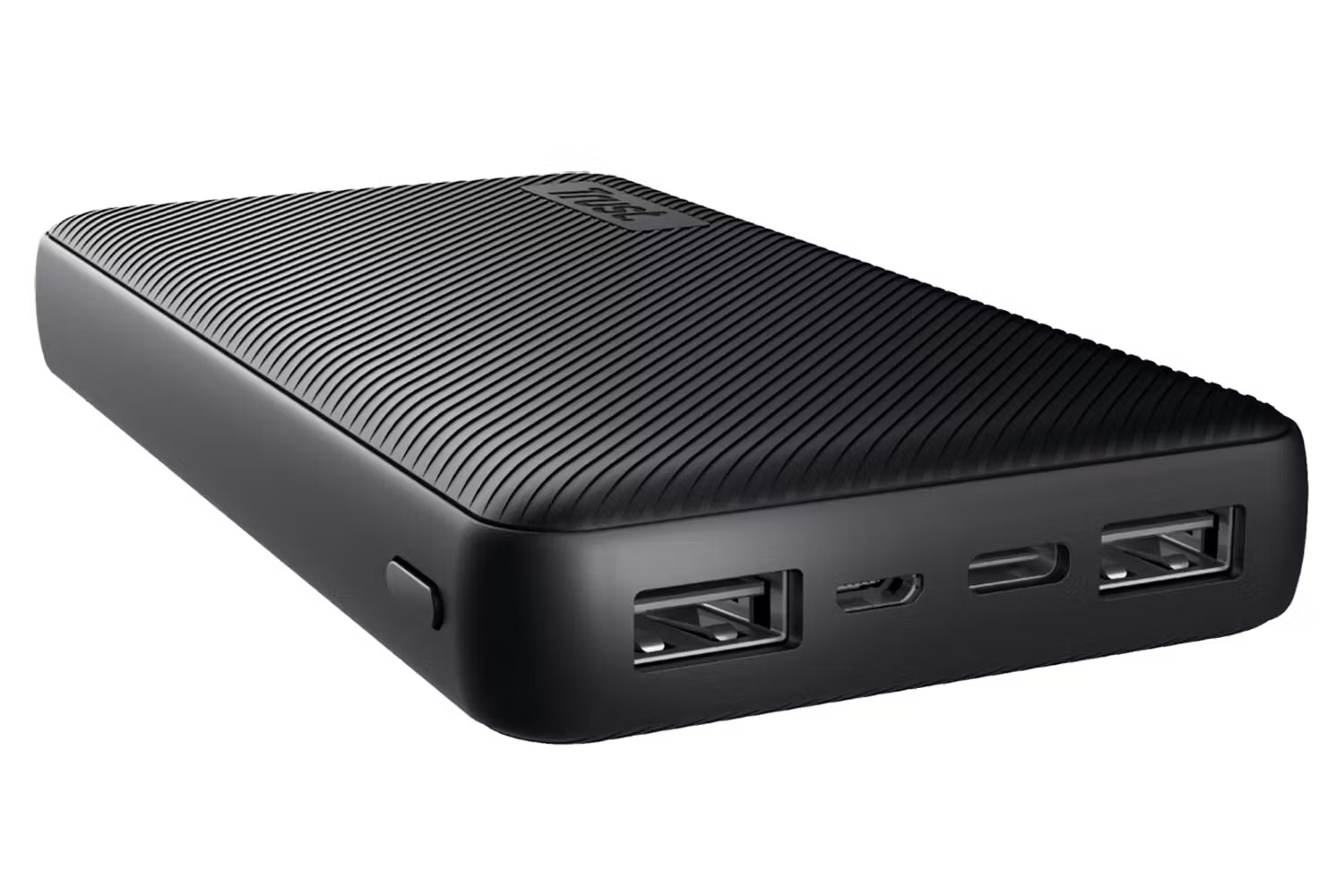Introduction
Welcome to our guide on how to choose the perfect power bank to meet your charging needs. As our lives become increasingly dependent on smartphones, tablets, and other portable devices, having a reliable power bank has become essential. Whether you’re a frequent traveler, a busy professional, or simply someone who wants to ensure their gadgets stay powered up throughout the day, a power bank can be a lifesaver.
In this article, we will walk you through the key factors to consider when selecting a power bank. We’ll discuss topics such as capacity, output power, number of USB ports, input power, size and weight, charging speed, compatibility, safety features, price and value for money, as well as the brand and warranty. By the end of this guide, you’ll have all the knowledge you need to make an informed decision and choose the right power bank for your specific needs.
Now, let’s dive into the details and explore each of these factors to help you find the perfect power bank that will keep your devices charged and ready whenever you need them.
Capacity
The capacity of a power bank is one of the most important factors to consider. It determines how much charge the power bank can hold and how many times it can recharge your device. The capacity is usually measured in milliampere-hours (mAh). The higher the mAh rating, the more charge the power bank can store.
When choosing a power bank, consider the battery capacity of the device you want to charge. For example, if your smartphone has a battery capacity of 3000mAh, a power bank with a capacity of 5000mAh should be able to recharge it fully at least once. Keep in mind that power banks are not 100% efficient, so there will be some energy loss during the charging process.
It’s also important to note that not all devices have the same charging requirements. For example, a tablet or a laptop will require a power bank with a higher capacity compared to a smartphone. Consider the types of devices you plan to charge and their individual power requirements when selecting a power bank.
Additionally, think about how many devices you need to charge simultaneously. If you often have multiple devices that need charging at the same time, opt for a power bank with a higher capacity and multiple USB ports to accommodate all your devices.
Lastly, keep in mind that larger capacity power banks can be bulkier and heavier. If portability is a priority, strike a balance between capacity and size/weight to find a power bank that suits your needs.
Output Power
The output power of a power bank refers to the amount of power it can deliver to your device. It is typically measured in volts (V) or amps (A). The output power should match the requirements of your device to ensure efficient and fast charging.
When considering the output power, check the charging specifications of your devices. Most smartphones and tablets require a standard 5V/2.4A output, while some newer devices may support higher voltages or fast charging technologies such as Qualcomm Quick Charge or USB Power Delivery.
If you have devices that require different output power levels, look for a power bank with multiple output ports, each with different power ratings. This will allow you to charge different devices simultaneously, without compromising on charging speed or compatibility.
It’s also worth noting that some power banks feature smart or adaptive charging technology. These power banks can automatically adjust the output power based on the connected device’s requirements, providing optimized charging for a wide range of devices.
In addition to output power, also consider the maximum charging speed of the power bank. Look for technologies such as “fast charging” or “quick charge” that can significantly reduce the time it takes to fully charge your devices. However, keep in mind that fast charging may require specific cables or adapters, so ensure compatibility before making a purchase.
In summary, choose a power bank with an output power that matches your device’s requirements, and consider additional features such as multiple output ports and fast charging capabilities for added convenience and versatility.
Number of USB Ports
The number of USB ports on a power bank determines how many devices you can charge simultaneously. It’s an important factor to consider, especially if you frequently need to charge multiple devices on the go.
When deciding on the number of USB ports, think about how many devices you typically carry and need to charge at the same time. If you often have multiple smartphones, tablets, or other USB-powered gadgets with you, look for a power bank with multiple USB ports.
Having multiple USB ports allows you to charge multiple devices simultaneously, saving you time and ensuring all your devices stay powered up. This can be particularly useful when traveling or during long commutes where access to wall outlets may be limited.
Additionally, pay attention to the total output current of the power bank. It’s important that the combined output of all the USB ports is sufficient to charge your devices efficiently. For example, if you have two devices that require 2.4A each, make sure the power bank can provide a total output current of at least 4.8A to ensure both devices charge at their optimal speed simultaneously.
Furthermore, some power banks offer smart charging technology, which can automatically detect the power requirements of each connected device and allocate the optimal charging current accordingly. This ensures that each device charges at its fastest possible speed, regardless of the number of USB ports in use.
In summary, consider your charging needs and the number of devices you typically carry when choosing a power bank. Opt for one with multiple USB ports and sufficient total output current to charge all your devices efficiently.
Input Power
The input power of a power bank refers to how fast it can be recharged. It is an important consideration, especially if you need to quickly recharge your power bank before heading out.
The input power is typically measured in volts (V) or amps (A). The higher the input power, the faster the power bank can be charged. Most power banks have an input power of 5V/2A, which is the standard rate for USB charging.
If you want a power bank that can be recharged quickly, look for options that support higher input power, such as 9V or 12V. These power banks often come with specific charging technologies, like Qualcomm Quick Charge or USB Power Delivery, which allow for faster recharging when paired with compatible chargers.
It’s also worth noting that the charging time of a power bank depends not only on its input power but also on its capacity. A larger capacity power bank will naturally take longer to recharge compared to a smaller one. Consider your charging needs and how much time you have available to recharge your power bank when making a decision.
Furthermore, some power banks offer pass-through charging capabilities. This means you can plug in both your power bank and a device to a wall outlet simultaneously, and the power bank will recharge while also charging your device. This feature can be convenient, especially when you only have access to a single outlet.
Lastly, check the charging cable that comes with the power bank. Ensure it supports the input power of the power bank and is of good quality. Using a low-quality or incompatible cable may limit the charging speed and efficiency of the power bank.
In summary, consider the input power of the power bank to determine how quickly it can be recharged. Look for higher input power options if fast charging is a priority, and make sure to use a high-quality charging cable for optimal performance.
Size and Weight
The size and weight of a power bank are important considerations, especially if you plan to carry it with you on a daily basis or during your travels. A compact and lightweight power bank is often more convenient and portable.
When choosing a power bank, think about how you intend to use it. If you want a power bank that easily fits in your pocket or bag, opt for a smaller-sized one. These power banks are lightweight and can be easily carried around without adding much bulk or weight.
However, keep in mind that smaller power banks usually have a lower capacity. If you require a higher capacity power bank, you may need to compromise on size and weight and opt for a larger one.
Consider your usage scenarios and the comfort level with carrying a slightly bulkier power bank. For example, if you often travel, a slightly larger power bank with a higher capacity may be more beneficial to ensure you have sufficient charge for all your devices throughout your journey.
In addition, pay attention to the build quality and materials of the power bank. Some power banks use lightweight and durable materials, such as aluminum or high-quality plastic, which can reduce the overall weight without compromising on durability.
Furthermore, consider the design and form factor of the power bank. Some power banks have sleek and slim designs that make them easy to hold and carry, while others have more rugged or ergonomic designs for added durability and grip.
In summary, choose a power bank that strikes a balance between size, weight, and capacity based on your needs and preferences. Consider the usage scenarios, portability requirements, and material quality to find a power bank that is both convenient and practical for your charging needs.
Charging Speed
The charging speed of a power bank is an important factor to consider, especially if you need to quickly recharge your devices on the go. It determines how fast your devices will charge when connected to the power bank.
When evaluating the charging speed, check the output power of the power bank. Higher output power, such as 2.4A or above, indicates that the power bank can deliver a faster charging speed. This is especially important if you have devices that support fast charging technologies like Quick Charge or USB Power Delivery.
It’s worth noting that the charging speed also depends on the charging cable you use. To maximize the charging speed, make sure to use a high-quality cable that supports the maximum output power of the power bank. Using a low-quality or damaged cable can limit the charging speed and efficiency.
Some power banks come with advanced charging technologies, such as smart or adaptive charging. These technologies allow the power bank to automatically detect the connected device’s power requirements and deliver the optimal charging current. This ensures that your device charges at its fastest possible speed, regardless of its power requirements.
Additionally, consider the charging speed of the power bank itself. How quickly can the power bank recharge after it runs out of power? Look for power banks that support fast recharging technologies, like Quick Charge or USB Power Delivery. These technologies can significantly reduce the recharging time of the power bank, ensuring you’re never out of power for too long.
In summary, if fast charging is a priority for you, choose a power bank with a higher output power and support for fast charging technologies. Use high-quality charging cables and consider power banks with smart or adaptive charging capabilities for optimized charging speed and efficiency.
Compatibility
Compatibility is a crucial factor to consider when choosing a power bank. You want to ensure that the power bank is compatible with your devices to provide seamless and reliable charging.
Firstly, check the type of USB ports available on the power bank. Most power banks have standard USB-A ports, which are compatible with the majority of devices. However, if you have devices that use USB-C or other proprietary charging ports, make sure the power bank has the corresponding ports or includes the necessary adapters.
Another aspect of compatibility is the charging protocol supported by the power bank. Different devices may require specific charging protocols, such as Qualcomm Quick Charge or USB Power Delivery. Verify if the power bank supports these technologies if you have devices that require them for fast charging.
It’s also essential to consider the operating system of your devices. While power banks generally work with any operating system, some power banks may have additional features or compatibility limitations with specific operating systems. For example, some power banks may offer built-in cables or wireless charging capabilities that are tailored for compatibility with certain devices or operating systems.
In addition to device compatibility, consider the charging cable compatibility. Ensure that the power bank comes with the necessary cables or adapters for your devices, or that it uses standard USB cables that you already have. This saves you the hassle of purchasing additional cables.
Lastly, it’s recommended to read customer reviews and check compatibility lists provided by the power bank manufacturer to ensure compatibility with your specific devices.
In summary, when selecting a power bank, ensure it is compatible with your devices in terms of USB port types, charging protocols, operating systems, and charging cable compatibility. This ensures a seamless and hassle-free charging experience.
Safety Features
When choosing a power bank, it’s important to consider the safety features that are built into the device. These features not only protect your devices but also ensure the safety of the power bank itself.
One key safety feature to look for is overcharge protection. This feature prevents the power bank from overcharging your devices, which can lead to damage or reduced battery life. It automatically cuts off the power supply once your devices are fully charged.
Overcurrent protection is another essential safety feature. It safeguards your devices and the power bank from excessive current flow, preventing any potential damage caused by short circuits or power surges.
Short circuit protection is important as well. It prevents the flow of excessive current in the event of a short circuit, safeguarding your devices and the power bank from potential damage or overheating.
Temperature control is a crucial safety feature to consider. It helps regulate the temperature of the power bank during charging and discharging, preventing overheating. Overheating can damage the battery cells or even cause a fire hazard, so it’s essential to select a power bank with effective temperature control mechanisms.
Some advanced power banks also come with built-in battery management systems. These systems monitor and balance the charge and discharge cycles of the power bank, maximizing battery life and ensuring optimal performance over time.
Certifications like CE, FCC, and RoHS are indications that the power bank meets certain safety and quality standards. These certifications provide additional peace of mind and assurance that the power bank has undergone rigorous testing.
It’s important to note that while power bank safety features are crucial, they are not foolproof. It’s still important to use the power bank according to the manufacturer’s instructions and avoid exposing it to extreme temperatures or other hazardous conditions.
In summary, prioritize power banks that offer safety features such as overcharge protection, overcurrent protection, short circuit protection, temperature control, and battery management systems. Look for certification marks to ensure that the power bank meets recognized safety standards.
Price and Value for Money
When considering a power bank, the price is an important factor to take into account. However, it’s equally important to look beyond the price tag and consider the overall value for money.
Price alone should not be the sole determining factor in your decision. Instead, consider the features, quality, and performance of the power bank. A power bank with a higher price may offer more advanced features or better build quality, which can add value in the long run.
Assess the capacity, output power, number of USB ports, compatibility, and safety features of the power bank in relation to its price. Determine if the power bank offers a good balance between these factors and the price point. Look for power banks that provide the right features and specifications for your needs, at a reasonable price.
Consider the reputation and reliability of the brand as well. Well-established brands may charge a premium, but their products often come with better quality assurance, customer support, and warranty coverage.
Compare prices and read customer reviews to get a better understanding of the value for money offered by different power banks. Look for reviews that specifically evaluate the performance, durability, and overall satisfaction of customers to gauge the reliability and satisfaction that the power bank can provide.
Additionally, pay attention to warranty coverage. A longer warranty period typically reflects the manufacturer’s confidence in the quality and durability of the power bank. It provides reassurance that you can get support or a replacement if any issues arise within the warranty period.
In summary, while price is an important consideration, also evaluate the overall value for money by assessing the features, quality, warranty coverage, and brand reputation. Look for a power bank that offers the right balance of features and specifications at a reasonable price, ensuring a reliable and satisfactory charging experience.
Brand and Warranty
When choosing a power bank, considering the brand and warranty is essential. Opting for a reputable brand and a robust warranty can provide peace of mind and ensure a positive ownership experience.
A well-established brand often signifies reliability, quality, and better customer support. These brands have a reputation to uphold, which means they are more likely to prioritize product performance, safety, and customer satisfaction.
Do some research on the brand’s track record, customer reviews, and ratings. Look for brands that have consistently positive feedback and a strong presence in the market. Engage with communities and forums to gather insights and opinions from other users.
Furthermore, a comprehensive warranty is crucial in case any issues arise with your power bank. Review the warranty terms and conditions to understand what kind of coverage is provided. Check the duration of the warranty and any specific conditions or limitations that may apply.
Look for warranties that cover manufacturing defects, faulty components, and other potential issues that may arise during normal use. Longer warranty periods are generally more favorable, as they offer greater protection and reflect the manufacturer’s confidence in the product’s quality and durability.
Consider the warranty support offered by the brand. Look for brands that have a responsive and reliable customer service team that can assist you in case of any warranty claims or product-related inquiries.
It’s also worth noting that some brands provide additional benefits or extended warranties for registering your power bank. Take advantage of these offers to maximize the value and protection you receive with your purchase.
While a brand’s reputation and warranty are important, keep in mind that they should complement the other features and specifications that you require in a power bank. Balance the brand’s reputation, warranty coverage, and overall value for money to make an informed decision.
Ultimately, choosing a power bank from a reputable brand with a solid warranty can provide you with confidence, assurance, and reliable support throughout your ownership experience.
Conclusion
Choosing the right power bank is essential to keep your devices charged and ready, whether you’re at home, in the office, or on the go. By considering the key factors discussed in this guide, you can make an informed decision that meets your specific charging needs.
Capacity is a fundamental consideration, as it determines how much charge the power bank can hold and how many times it can recharge your devices. Be sure to choose a capacity that aligns with your device’s battery capacity and charging requirements.
Output power and the number of USB ports are crucial for efficient and simultaneous charging. Pay attention to the output power rating and the number of ports to ensure compatibility and fast charging for your devices.
Input power determines how quickly your power bank can be recharged, and considering the input power and recharging time is vital, especially when you need your power bank ready in a short period.
The size and weight of the power bank should be considered according to your portability requirements. Finding the right balance between size, weight, and capacity ensures convenience without compromising on charging capability.
Charging speed, compatibility, safety features, price, brand reputation, and warranty are all key factors that contribute to the overall value and performance of a power bank. Evaluate these factors based on your specific needs and preferences to make an informed decision.
Remember to pay attention to safety features like overcharge protection, overcurrent protection, and short-circuit protection to safeguard your devices and the power bank itself.
Finally, consider the brand reputation and warranty coverage to ensure quality assurance and reliable customer support.
By considering these factors and finding the right balance, you can select a power bank that fits your charging requirements, offers convenience, and keeps your devices powered up whenever and wherever you need them.







